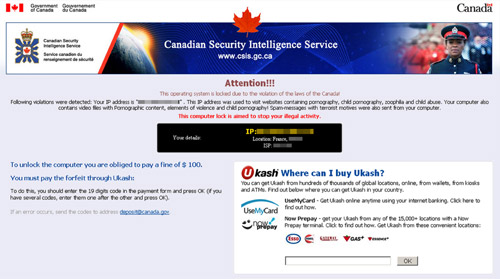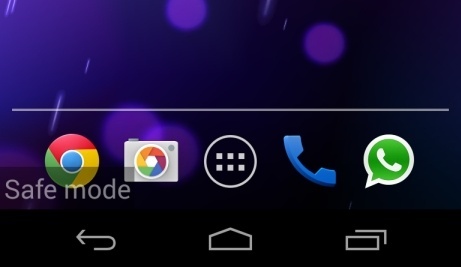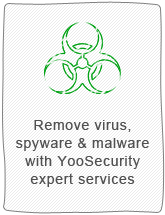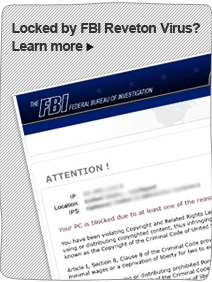Well, my LG Android phone has been locked up because of this CSIS Ukash scam, how do I remove it? It blocked my android phone warning: attention! Your device has been blocked for possession of child pornography and violations of copyright laws and related laws which I have never done before. It asked me to pay 100 dollars (100$) or 100 euros (100€) to unlock the device within 24 or 48 hours, or I would be imprisoned for several years. I was scared and I duly did that. I searched on the web and a lot of people had the same problem on their Android phones or tablets, they said this CSIS alert message is a virus scam. Are you sure that this CSIS Ukash message is a kind of Android virus but not a real alert from the police? What happens if your phone gets locked by CSIS ukash thing? I just can’t do anything on my LG phone since it was locked up by the CSIS Ukash malware. How can I unlock my Android phone from the CSIS Ukash virus scam? I’m not good at dealing with Android Mobile OS, what should I do?
CSIS Ukash Virus Scam Blocked Android Phone or Tablet – How to Unlock?
CSIS Ukash virus (known as Canadian Security Intelligence Service virus) turns out to be a malicious Ukash ransomware that is capable of affecting computers running with Windows OS, Mac machines, Mobile phones running with Android system and Mac OS X, tablet and iPad and many other devices. The CSIS Ukash virus mainly targets Android phone or tablet users located in the Canada, but it can be changed into vicious variants sharing with different names including Metropolitan Police virus, PCEU Ukash virus, RCMP Ukash virus, FBI Moneypak virus, AFP virus and Interpol virus, etc. which further attempt to affect Android phone users and tablet users all over the world. It can lock up the whole Android phone, tablet or block the Internet browser of your Android device by displaying a fake CSIS alert saying that your device has been blocked due to your possession or distribution of child pornography and other illegal content. According to the CSIS warning message, you are accused of involving illegal activities like distributing and sharing copyright material, and distributing pornographic material online and violating copyrights law (Video, Music and Software) and related laws. On receiving this CSIS alert, many smartphone and tablet victims may think that they get in big trouble with the law enforcement agency. Thus, lots of phone and tablet users are apt to fall into this CSIS Ukash virus scam without giving it a second thought.
Initially, most of Android phone users and tablet users know little about this CSIS Ukash scam, they are easy to be scammed by the fake Ukash alert and send 100 dollars (100$) or 100 euros (100€) through Ukash to get a fake Ukash code which does not help unlock your Device at all. Once you submit the non-existing fine, you will lose your hard-earned money and leave your Android phone or tablet affected by the CSIS ransomware too long. In fact, all information or details listed on the CSIS alert page is fake and false, only to take you into its scam and swindle your money illegally. If you search for CSIS Ukash scam on the web, you will find out lots of users have accidentally picked up this virus on their computers, Mac machines, smartphones, tablets and iPads, etc. Indeed, smartphone and tablet are not always secure for users to perform online activities including making e-payment, visiting webs, reading emails and downloading music/video files from the Internet and so on. Instead, cyber criminals have changed this CSIS Ukash malware from time to time in order to get your mobile phone and tablet affected aggressively. Android phone users and tablet users should be aware that this CSIS Ukash virus is not legitimate or will help you unlock your device once you pay the fine. Do not trust this CSIS Ukash ransomware or sending any money via its fake payment system. All you need to do is to take actions to remove the risky CSIS Ukash virus from your Android phone or tablet completely and manually.
This CSIS Ukash malware is mainly distributed through the network, for cyber criminals have uploaded the virus files and files associated with its variant to hacked web pages. Actually, most android phone users and tablet users have suffered from this CSIS Ukash virus mainly by visiting doubtful websites containing porn, game, gambling or downloading free applications from unlicensed sources or reading fake email attachments. For instance, the CSIS Ukash virus can be disguised as a flash player or video file or apk file asking you to click or download it to your mobile phone or tablet. Sometimes, the vicious CSIS Ukash malware may penetrate into your Android phone or tablet by downloading unknown applications or files to your device without any permission. Upon arrival, the CSIS Ukash virus can be activated in your tablet or smartphone running with Android OS and Mac OS X. Thus, you should get rid of the CSIS Ukash malware on your Android phone or tablet and be cautious with your web browsing activities in future.
If your android phone (Samsung, Sony, LG, HTC, ZTE, Motorola, etc.) or tablet (Samsung, Dell, ASUS, HP, Sony, etc.)is infected with this CSIS Ukash virus, it will be hard for you to remove it with security tool completely, because there is no perfect antivirus to kill threats on android phone and tablet and also this virus is very tricky and can escape from security apps. And how to unlock your android phone or tablets from this CSIS Ukash virus? In this case, manual removal with sufficient expertise online is the best way for you to completely remove it from android phone or tablet.
Main Traits of CSIS Ukash Scam Virus on Android Phone and Tablet
1. The CSIS Ukash Scam is designed to lock your android phone and tablet asking that you need to pay for a fine from 100$ or 100€ to unlock your device. In fact, it is just a big virus scam.
2. It locks your android phone or tablet, claiming that you’ve violated the law of local office by visiting illegal information online.
3. Soon as the CSIS Ukash virus targets your phone or tablet, it blocks your device and prevents you from doing anything there.
4. It allows remote access to your android phone or tablet for your personal information and other sensitive information.
If you find any symptoms listed above showing on your android cellphone or tablet, then your device must be suffered with a malware infection (which can be CSIS Ukash virus, FBI Online Agent virus, Vanilla Reload virus, Mandiant U.S.A. Cyber Security virus, FBI Moneypak virus, Prism virus, U.S.A Cyber Security virus, AFP Crime Commission virus and GVU Ukash Virus etc.) that blocks your access to your android smartphone or tablet. Welcome to contact YooSecurity Online Experts for manual removal guide. Also, we will provide a short removal guide below for android phone and tablet literate.
NOTE: Being afraid to do any wrong operation during the process of removing this CSIS Ukash virus? Please contact YooSecurity Online Experts, we are here to help you:

A Screenshot of CSIS Ukash Scam Blocked Android phone and Tablet

CSIS Ukash Virus Manual Removal Guide on Phone and Tablet
1. Since your android phone or tablet is blocked by this CSIS Ukash malware virus, you will need to restart your phone or tablet to safe mode which starts up without loading any third-party add-ons. By this way, you are capable to carry out malware removal steps on your tablet. Here are two examples for you to put the android phone and tablet to safe mode. The method mentioned below is also applied to most android phone. Take Dell Tablet as an example:
For Dell tablet: 1) Power down. 2) Turn on till you see the Vendor’s logo, press and hold Volume Down key till you access to safe mode.
Note: Samsung, Sony, HP and other brands’ tablet users can also try the same way as Dell’s to put your tablet to safe mode. If you have put your tablet to safe mode successfully, you should see a text “Safe Mode” at the bottom left corner.

2. Once you have put your tablet in safe mode, you are capable to uninstall malicious apps of your tablet. However, the manual removal process of harmful apps requires sufficient expertise. To safely deal with the CSIS Ukash virus and other hazardous apps, you had better contact an expert online for further removal help.
Conclusion
From the above mentioned, we learn that this CSIS Ukash virus is at high threat level. It can be changed daily into different variants in order to targets worldwide net users who use computers, Mac machines, mobile phones, tablets and iPad and other devices. It is designed by cyber criminals to trick unknown phone or tablet victims into submitting the fake fine blindly through Ukash. The interface of the CSIS Ukash alert seems quite reliable at your first sight, in order to make you convinced that you are breaking the law and needed to pay a fine to get your device unlocked. In fact, the CSIS warning message is fake and false, and it has nothing to do with the law enforcement agency. The CSIS Ukash scam is a malicious ransomware virus which Android phone users or tablet users should take measures to kick it off your device immediately. There is no circumstance for you to trust or send money through Ukash to get any non-existing code to unlock your Android phone or tablet. Instead, you had better unlock your Android phone or tablet from this CSIS Ukash virus scam manually with expertise.
Suggestion: Have spent a lot of time but can’t get out of CSIS Ukash virus scam on your mobile device? Contact online experts for tech support now!

Published by Tony Shepherd & last updated on June 24, 2015 1:09 pm












Leave a Reply
You must be logged in to post a comment.